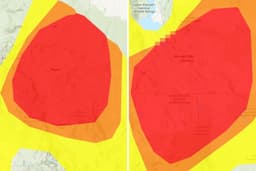Home / Business and Economy / Extreme Weather Drives US Insurance Markets to the Brink
Extreme Weather Drives US Insurance Markets to the Brink
16 Nov
Summary
- Private insurers flee high-risk states like California
- State-run insurance plans struggle to cover mounting claims
- Climate change identified as a key driver of the crisis

As of November 16th, 2025, a growing number of extreme weather events and natural disasters have pushed insurance markets across the United States to the brink, potentially impacting millions of homeowners. The crisis has hit several states particularly hard, most notably California.
An increased risk of wildfires and other severe weather events has caused many private insurance companies to raise their rates to unsustainable levels for many people, or to leave states completely. In 2023, State Farm announced it would no longer offer new homeowner's insurance policies in California due to the heightened risk of fire and other disasters.
To counter this, California created a state-chartered insurance plan called the FAIR Plan, which uses policy premiums to pay out claims when needed. However, the number of policies under the FAIR Plan has nearly doubled, and its total liability is nearly $700 billion, leading experts to question whether the plan will soon run out of money, forcing insurance companies and policyholders to pay out claims.
The connection between climate change and the insurance crisis is clear. As global temperatures have risen to record-breaking levels over the past decade, the frequency and severity of weather events like hurricanes, floods, and wildfires have increased dramatically, causing massive insurance payouts and forcing companies to rethink their policies in certain locations.




